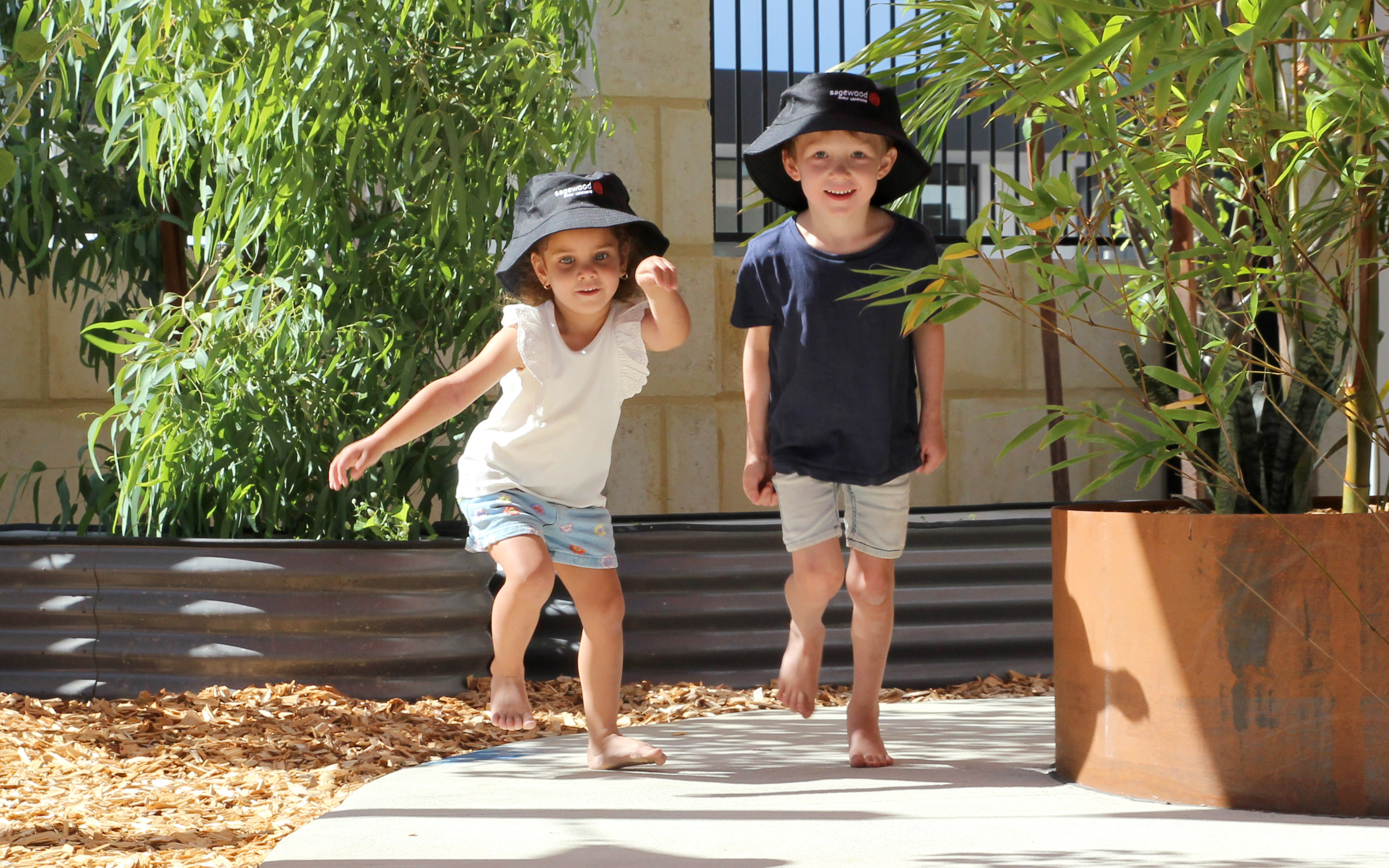Media release
From:
Preschool children with more backyard space and those who live closer to parks and water do more active play than children from other neighbourhoods, according to a new study by The Kids Research Institute Australia.
The research published in the journal Environment and Behaviour shows children living closer to oceans and rivers, and “semi-rural” neighbourhoods experienced 13-26 minutes more physical activity every day than children living in other neighbourhood types, like “higher public transport and destination mix.” Children with more home yard space and living closer to natural features also did more active play than others.
Chief Investigator, Professor Hayley Christian - Head of Child Physical Activity, Health and Development at The Kids and a Senior Research Fellow at The University of Western Australia -said physical activity patterns established in early childhood often persisted through life.
“The goal is to find out what factors influence young children’s health and wellbeing so that good policy and urban planning consider children’s needs and support children to thrive,” Professor Christian said.
“Continuing urban sprawl to support home yard space is not the best solution, so with the increasing densification of our cities, we need access to safe and attractive public open spaces close to homes, consideration of traffic flow and speed, increased tree canopy, and protection of our natural green and blue spaces for generations to come.”
Researchers at The Kids have been unable to find any Western Australia and relevant Commonwealth policy documents that specifically consider the influence of the built environment on child obesity, physical activity, sedentary behaviour, and diet. Professor Christian said this research aimed to inform that gap.
The findings coincide with the 10-year anniversary of the PLAY Spaces and Environments for Children’s Physical Activity Cohort Study (PLAYCE), which has helped to understand how physical activity, sedentary time, and sleep evolve from toddlerhood through to adolescence – and how these shape children’s health, development, and wellbeing.
PLAYCE is the world’s largest and longest-running study of young children’s movement behaviours using wearable devices. Since 2015, more than 2,000 Perth children have donned “superhero belts” to create the first international database of preschooler's accelerometer data, informing:
- The Australian Government 24-hour Movement Guidelines for the Early Years
- Active Healthy Kids Australia Report Cards, revealing that Australian children get a D- in physical activity – a grade which hasn’t improved in 10 years, largely due to a lack of energetic play
- World Health Organization’s Global Standards for Healthy Eating, Physical Activity, Sedentary Behaviour and Sleep in Childcare
More than 75 peer-reviewed publications and technical reports using PLAYCE data have provided new insights into:
Physical activity: Young children are physically active, but most do not meet physical activity guidelines for moderate to vigorous, or energetic play (e.g. running, jumping) averaging only 39 out of the 60 minutes recommended per day.
Sedentary screen time: Most preschoolers are getting too much screen time with 107 minutes per day, well over the recommended 60 minutes per day. 92 per cent met national sleep guidelines.
Social-emotional development: While boys had higher levels of overall emotional difficulties than girls, in both groups, these difficulties improved with additional physical activity.
Trees: Higher levels of tree canopy in Early Childhood Education Centres (ECEC) outdoor areas were linked to increased time spent outdoors and physical activity. More trees, shrubs, and grassed areas at home were linked to reduced emotional difficulties in children.
Pets: Children from dog-owning households were less likely to have social-emotional problemsanddid more physical activity, outdoor play and had 16 minutes a day more sleep. < Study finds link between family dog ownership and girls’ physical activity>
Place: ECEC with unobstructed running space, tree cover, sandboxes, slides, and portable play equipment encouraged more energetic play. ECEC services located in higher traffic areas were linked to reduced children’s physical activity levels. When parents were happy with their neighbourhood’s safety and destinations, pre-schoolers were less likely to have social-emotional difficulties.
Turning Evidence into Action: The Play Active Program: The discovery of low energetic play levels prompted the urgent development of Play Active, a national initiative designed to boost energetic play in ECEC. Launched in 2024, Play Active has been adopted by more than 100 childcare services and trained more than 1000 educators nationally, aiming to ensure 80,000+ children engage in energetic play, every day.
The PLAYCE cohort study is supported by funding from Healthway and from the BEACHES Project through the UK Research and Innovation-National Health and Medical Research Council Built Environment Prevention Research Scheme and the Future Health Research and Innovation Fund WA Cohort Studies. The study is also supported by the Australian Research Council’s Centre of Excellence for Children and Families over the Life Course.
PLAYCE acknowledges the following partners for a decade of support: National Heart Foundation, WA Department of Health, WA Department of Local Government, Sport and Cultural Industries, WA Department of Transport, WA Local Government Association, Cancer Council WA, Nature Play WA, Australian Childcare Alliance (WA), UWA Childcare, Goodstart Early Learning, Maragon Early Learning, Sonas Early Learning & Care, Mercy Care, Great Beginnings Early Education, Jellybeans Child Care & Kindy, Buggles Early Learning and Kindy and ArborCarbon.



 Australia; WA
Australia; WA


